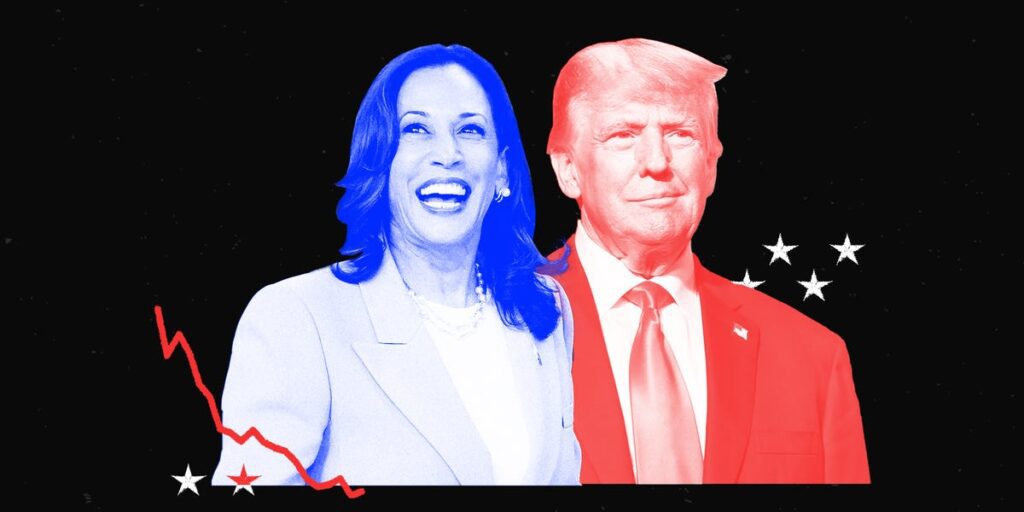Labor
Reuters
Harris long allied herself with organized labor, but Trump is aiming to chip away at the Democratic ticket’s union support this fall.
Biden, who last year became the first sitting US president to walk a picket line, has been a dependable champion of labor unions. But as Harris looks to succeed Biden in the White House, she has taken steps to firm up support with this critical bloc of voters.
Along with Biden, Harris prioritized passage of the bipartisan infrastructure law, with one of its selling points being the creation of thousands of well-paying union jobs. And last year, the Biden administration’s Department of Labor tweaked a rule in how it calculates prevailing wages for construction workers, with the changes affording them higher pay and more workplace protections.
In recent decades, public-sector unions have become increasingly diverse, with more female, Black, and Latino members who have often thrown their support behind Democratic candidates. After Harris’ ascension as the Democratic presidential nominee, union mobilization became even more critical for her campaign — as she lacked the decades of relationships that Biden fostered with labor leaders.
Harris’ outreach was on full display in early September, when she emphatically vowed to protect workers’ rights during a rally in Michigan, the “blue wall” state that’s a critical part of her electoral calculus.
But Trump has been successful in earning endorsements from influential police unions like the Police Officers Association of Michigan and the Florida Police Benevolent Association.
Trump’s mission is clear: He wants to win over more union households in battleground states like Michigan and Wisconsin. During the September presidential debate, Trump sought to tie the immigration debate to unions, arguing that those in the country illegally were “taking jobs” from American union workers.
In 2016, Trump made strong gains with these voters, but Biden flipped many of them back into the Democratic column in 2020, promising robust support for the automobile industry. In January, Biden earned the backing of the United Auto Workers after joining them on the picket line, with UAW president Shawn Fain saying: “Joe Biden bet on the American worker while Donald Trump blamed the American worker.” Trump responded that Fain “didn’t have a clue.”
After Biden’s withdrawal from the presidential race, the UAW threw its support behind Harris.
In March, Biden gave the auto industry slightly more time to adopt strict new rules for tailpipe emissions, in a huge win for organized labor, as automakers and unions were concerned about meeting the administration’s initial electric vehicle transition proposals. Harris had been seen as likely to continue the Biden administration’s push to advance EV production, but her campaign indicated in September that she “does not support an electric vehicle mandate.” Meanwhile, Trump has said that the transition to electric vehicles would decimate the auto industry and benefit China and Mexico.
A Gallup poll conducted in August found that 70% of Americans approved of labor unions, a marked increase from the 48% who backed unions in 2009.
With many Americans working multiple jobs and inflation continuing to take a toll on people, labor unions have fought for higher wages for employees. In a Gallup survey conducted in August 2023, 61% of Americans said that unions help the economy more than they hurt it, a figure that exceeded the previous high-water mark from 1999.
Trump has made the economy the hallmark of his campaign, touting low pre-COVID-19 unemployment numbers, especially among Black Americans. In both September 2019 and February 2020, the overall unemployment rate hit 3.5%, which at the time represented a 50-year low.
When Biden took office in January 2021, the unemployment rate, which rose sharply during the COVID-19 pandemic, sat at 6.4%. But unemployment hit a modern low of 3.4% in both January 2023 and April 2023, a figure that hadn’t been seen since 1969. In April 2023, Black unemployment hit a record low of 4.7%.
The overall unemployment rate has risen since last year, and it sits at 4.2% as of August.

